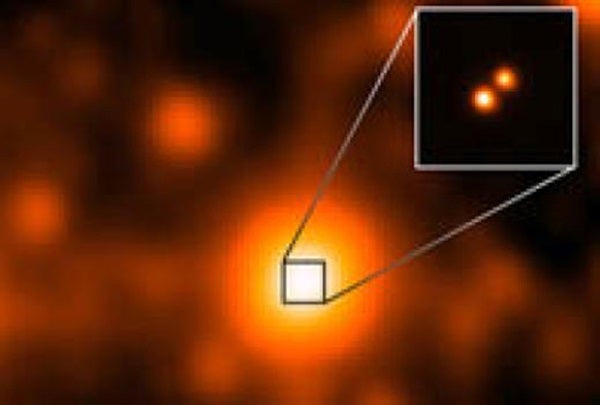Failed stars are known as brown dwarfs and have a mass below 8 percent that of the Sun — not massive enough to burn hydrogen in their centers. This particular system, Luhman 16AB (also called WISE J104915.57-531906), was discovered earlier this year and is only 6.6 light-years away.
After the discovery announcement, several teams of astronomers, including one with Carnegie’s Yuri Beletsky, used a variety of telescopes to characterize the neighboring couple.
After two-months of observations and extensive data analysis, Beletsky’s team, led by Henri Boffin of the European Southern Observatory (ESO), found that both objects have a mass between 30 and 50 Jupiter masses. By comparison, the Sun has a mass of about 1,000 Jupiter masses.
“The two brown dwarfs are separated by about three times the distance between the Earth and the Sun. Binary brown dwarf systems are gravitationally bound and orbit about each other. Because these two dwarfs have so little mass, they take about 20 years to complete one orbit,” said Beletsky.
The team used the FORS2 instrument on ESO’s Very Large Telescope at the Paranal Observatory in Chile to image the brown dwarf couple in the best possible conditions every five or six days over the period April 14 to June 22, 2013. Because the instrument enabled the observers to make very precise measurements, the scientists were already able to detect tiny displacements of the two objects in their orbit during only this two-month period.
The astronomers were able to measure the positions of the two brown dwarfs with 10 times better accuracy than before and thereby detect even small perturbations of their orbits.
“We have been able to measure the positions of these two objects with a precision of a few milli-arcseconds,” said Boffin. “That is like a person in Paris being able to measure the position of someone in New York with a precision of 10 centimeters.”
The measurements were so fine that the astronomers were able to see some very small deviations from the expected motion of the two brown dwarfs around each other. The fact that the deviations appear correlated is a strong indication that a companion perturbs the motion of one of the two brown dwarfs. This companion is most likely a planetary-mass object, which has an orbital period between two months and a year.
“Further observations are required to confirm the existence of a planet,” said Boffin. “But it may well turn out that the closest brown dwarf binary system to the Sun turns out to be a triple system!”










